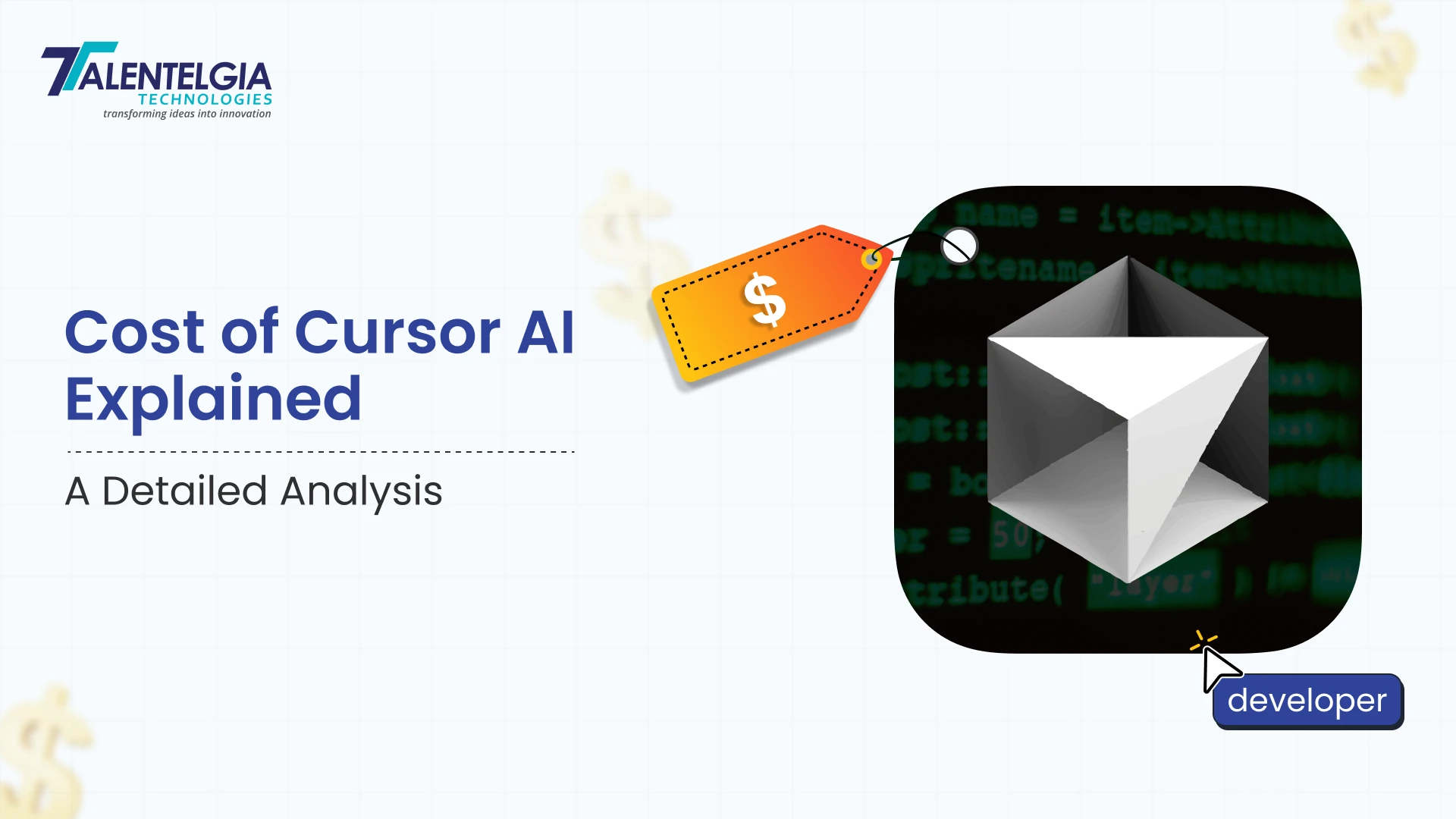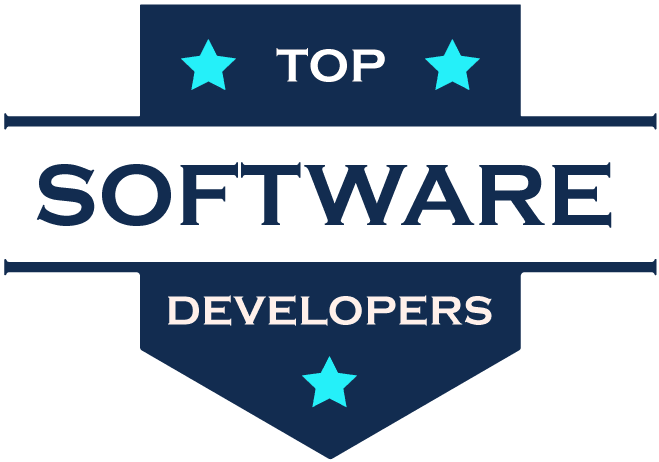In a fast-paced world where all coding tasks are powered by AI, it’s crucial to understand the prices of the AI tools that you use. AI coding assistants, such as “Cursor”, offer a plethora of models and pricing plans. But among other things, many users still get confused over how requests, quotas, and modes work. And if that’s not enough, the introduction of Normal and Max Mode models has made the Cursor AI cost structure feel like a maze.
This article is targeted towards Cursor AI users looking for answers or wishing to streamline their workflow cost-effectively. We will clarify the difference between Normal and Max Mode and the cost of Cursor AI with its different pricing models. This will help developers choose the best option for their specific needs.
Understanding Cursor AI: Features & Subscription Plans
In the ever-changing landscape of AI-coding assistants, coding tools like Cursor AI and GitHub Co-Pilot are taking the lead. Both these tools help with various software development tasks, thereby increasing productivity and efficiency. They give smart code recommendations and automate easier tasks, allowing developers to focus their efforts on more complex challenges. These features fit the preferences, patterns, and requirements of various developers.
Cursor AI is a unique AI Code Generator featured on Spotsaas that scans the entire codebase and customizes to each developer’s operating style. This tool not only offers basic code completion but also provides smart recommendations based on the project’s architecture and the developer’s coding style. It can even create entire code blocks by explaining in natural language.
Cursor AI can work with numerous languages. It uses widely used languages like Python, JavaScript, C#, and Java. Although it doesn’t cover as many lesser-known languages as GitHub Co-Pilot does, it still has a great depth of knowledge in the language it supports. This allows it to offer far better suggestions for coding projects.
Cursor AI Subscription Cost: How Does The Pricing Work?
Understanding the subscription cost of Cursor AI starts with the basic “request-based” system. Basically, every interaction with the Cursor AI model uses “requests”. The process of these requests, as well as their quantity, depends on the subscription plan you choose. Let’s get into the details.
As per the model pricing structure, one standard request costs $0.04. Cursor AI has different subscription plans for different usage requirements:
- Hobby Plan: This is a free tier plan with a maximum of 50 requests per month and a limited number of AI completions. It’s a great plan to try out Cursor AI’s capabilities.
- Pro Plan: This plan costs $20 /month. You get 500 fast requests per month with unlimited AI completions. Most importantly, you get unlimited “slow requests” after you max out your “fast requests”.
- Business Plan: This plan is priced at $40 /user/month with all features from the Pro Plan, designed for teams with centralized billing and admin dashboards.
| Features | Hobby Plan | Pro Plan | Business Plan |
|---|---|---|---|
| Trial | 2 weeks | — | — |
| Price | Free | $20 /month | $40 /user/month |
| Requests /month | 50 slow requests | 500 regular + unlimited slow requests | 500 regular + unlimited slow requests |
| AI Completions | 200 /month | Unlimited | Unlimited |
| Max Mode | ❌ | ✅ | ✅ |
| Org-wide Privacy | ❌ | ❌ | ✅ |
| Team Billing | ❌ | ❌ | ✅ |
| SAML / OIDC SSO | ❌ | ❌ | ✅ |
| Admin Usage dashboard | ❌ | ❌ | ✅ |
| Best For | Beginners, hobbyists, and early testers | Solo builders, freelancers, indie devs | Teams, startups, enterprises |
| Use Cases | Learn new languages with AI helpPrototype AI-powered coding workflowsHackathons or short-term projects | Refactor to improve codebase qualityDaily AI-assisted coding & feature developmentBuild full-stack apps with AI | Privacy-focused AI use in secure environmentsScalable team collaboration with AICentralized billing and user management |
Cursor AI’s Normal Mode vs. Max Mode: What Is Their Difference?
Cursor has two operational modes for its AI— “Normal mode” and “Max mode”. Choosing between the modes significantly affects the performance and how the Cursor AI models cost per request. This part causes lots of confusion among users, especially regarding the quick exhaustion of request quotas in Max Mode. Let us understand their differences with a table.
Normal Mode
When you’re in Normal Mode, text interactions you have with a model give you a fixed number of requests that is valid only for the specific model you selected. Cursor AI optimizes content management without impacting your request count per message. For example, a message with Claude 3.5 Sonnet could be 1 request for every user message (while their responses by Cursor could be free).
Max Mode
Max mode works using a token-based price system. As with all models, Cursor bills the model provider’s API price plus 20%. This covers all tokens from your messages, code files, folders, tool calls, and other contexts given. This is the area where the costs may increase if not managed carefully.
| Aspects | Normal Mode | Max Mode |
|---|---|---|
| Ideal for | Available after fast requests are exhausted | Multiple requests per interaction based on the token count |
| Pricing | Fixed request per message/model | Per 1M tokens (MTok) – API cost + 20% |
| Cost Example | 1 request for a Claude 3.5 Sonnet prompt | Up to 200, without reprompting |
| Predictability | High | Low/depends on complexity & content size |
| Tool Calls | Standard | Available after fast requests are exhausted |
| Context Window | Optimized by Cursor | Not available; requires usage-based pricing if fast requests are over |
| Slow Requests | Available after fast requests gets exhausted | Every day, coding tasksPredictable costs |
Selecting the appropriate mode for your task is very important for balancing performance with Cursor request quotas. Normal mode is best for daily activities. Reserve Max mode is best for complex tasks when you genuinely need its extended capabilities.
Conclusion
In summary, Cursor AI cost subscription plans provide a sustainable freemium model that is affordable and optimally directed towards developers’ needs. Switching to a Business plan only becomes necessary much later when greater collaboration and administrative control features are required.
For developers who want to go beyond the standard tools, Talentelgia provides best-in-class AI development services to enhance their app-building experience. Contact us to explore these advanced AI solutions


 Healthcare App Development Services
Healthcare App Development Services
 Real Estate Web Development Services
Real Estate Web Development Services
 E-Commerce App Development Services
E-Commerce App Development Services E-Commerce Web Development Services
E-Commerce Web Development Services Blockchain E-commerce Development Company
Blockchain E-commerce Development Company
 Fintech App Development Services
Fintech App Development Services Fintech Web Development
Fintech Web Development Blockchain Fintech Development Company
Blockchain Fintech Development Company
 E-Learning App Development Services
E-Learning App Development Services
 Restaurant App Development Company
Restaurant App Development Company
 Mobile Game Development Company
Mobile Game Development Company
 Travel App Development Company
Travel App Development Company
 Automotive Web Design
Automotive Web Design
 AI Traffic Management System
AI Traffic Management System
 AI Inventory Management Software
AI Inventory Management Software
 AI Software Development
AI Software Development  AI Development Company
AI Development Company  AI App Development Services
AI App Development Services  ChatGPT integration services
ChatGPT integration services  AI Integration Services
AI Integration Services  Generative AI Development Services
Generative AI Development Services  Natural Language Processing Company
Natural Language Processing Company Machine Learning Development
Machine Learning Development  Machine learning consulting services
Machine learning consulting services  Blockchain Development
Blockchain Development  Blockchain Software Development
Blockchain Software Development  Smart Contract Development Company
Smart Contract Development Company  NFT Marketplace Development Services
NFT Marketplace Development Services  Asset Tokenization Company
Asset Tokenization Company DeFi Wallet Development Company
DeFi Wallet Development Company Mobile App Development
Mobile App Development  IOS App Development
IOS App Development  Android App Development
Android App Development  Cross-Platform App Development
Cross-Platform App Development  Augmented Reality (AR) App Development
Augmented Reality (AR) App Development  Virtual Reality (VR) App Development
Virtual Reality (VR) App Development  Web App Development
Web App Development  SaaS App Development
SaaS App Development Flutter
Flutter  React Native
React Native  Swift (IOS)
Swift (IOS)  Kotlin (Android)
Kotlin (Android)  Mean Stack Development
Mean Stack Development  AngularJS Development
AngularJS Development  MongoDB Development
MongoDB Development  Nodejs Development
Nodejs Development  Database Development
Database Development Ruby on Rails Development
Ruby on Rails Development Expressjs Development
Expressjs Development  Full Stack Development
Full Stack Development  Web Development Services
Web Development Services  Laravel Development
Laravel Development  LAMP Development
LAMP Development  Custom PHP Development
Custom PHP Development  .Net Development
.Net Development  User Experience Design Services
User Experience Design Services  User Interface Design Services
User Interface Design Services  Automated Testing
Automated Testing  Manual Testing
Manual Testing  Digital Marketing Services
Digital Marketing Services 
 Ride-Sharing And Taxi Services
Ride-Sharing And Taxi Services Food Delivery Services
Food Delivery Services Grocery Delivery Services
Grocery Delivery Services Transportation And Logistics
Transportation And Logistics Car Wash App
Car Wash App Home Services App
Home Services App ERP Development Services
ERP Development Services CMS Development Services
CMS Development Services LMS Development
LMS Development CRM Development
CRM Development DevOps Development Services
DevOps Development Services AI Business Solutions
AI Business Solutions AI Cloud Solutions
AI Cloud Solutions AI Chatbot Development
AI Chatbot Development API Development
API Development Blockchain Product Development
Blockchain Product Development Cryptocurrency Wallet Development
Cryptocurrency Wallet Development About Talentelgia
About Talentelgia  Our Team
Our Team  Our Culture
Our Culture 
 Healthcare App Development Services
Healthcare App Development Services Real Estate Web Development Services
Real Estate Web Development Services E-Commerce App Development Services
E-Commerce App Development Services E-Commerce Web Development Services
E-Commerce Web Development Services Blockchain E-commerce
Development Company
Blockchain E-commerce
Development Company Fintech App Development Services
Fintech App Development Services Finance Web Development
Finance Web Development Blockchain Fintech
Development Company
Blockchain Fintech
Development Company E-Learning App Development Services
E-Learning App Development Services Restaurant App Development Company
Restaurant App Development Company Mobile Game Development Company
Mobile Game Development Company Travel App Development Company
Travel App Development Company Automotive Web Design
Automotive Web Design AI Traffic Management System
AI Traffic Management System AI Inventory Management Software
AI Inventory Management Software AI Software Development
AI Software Development AI Development Company
AI Development Company ChatGPT integration services
ChatGPT integration services AI Integration Services
AI Integration Services Machine Learning Development
Machine Learning Development Machine learning consulting services
Machine learning consulting services Blockchain Development
Blockchain Development Blockchain Software Development
Blockchain Software Development Smart contract development company
Smart contract development company NFT marketplace development services
NFT marketplace development services IOS App Development
IOS App Development Android App Development
Android App Development Cross-Platform App Development
Cross-Platform App Development Augmented Reality (AR) App
Development
Augmented Reality (AR) App
Development Virtual Reality (VR) App Development
Virtual Reality (VR) App Development Web App Development
Web App Development Flutter
Flutter React
Native
React
Native Swift
(IOS)
Swift
(IOS) Kotlin (Android)
Kotlin (Android) MEAN Stack Development
MEAN Stack Development AngularJS Development
AngularJS Development MongoDB Development
MongoDB Development Nodejs Development
Nodejs Development Database development services
Database development services Ruby on Rails Development services
Ruby on Rails Development services Expressjs Development
Expressjs Development Full Stack Development
Full Stack Development Web Development Services
Web Development Services Laravel Development
Laravel Development LAMP
Development
LAMP
Development Custom PHP Development
Custom PHP Development User Experience Design Services
User Experience Design Services User Interface Design Services
User Interface Design Services Automated Testing
Automated Testing Manual
Testing
Manual
Testing About Talentelgia
About Talentelgia Our Team
Our Team Our Culture
Our Culture

















 Write us on:
Write us on:  Business queries:
Business queries:  HR:
HR: 




